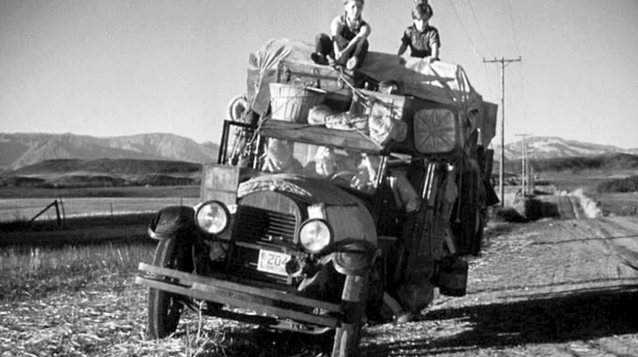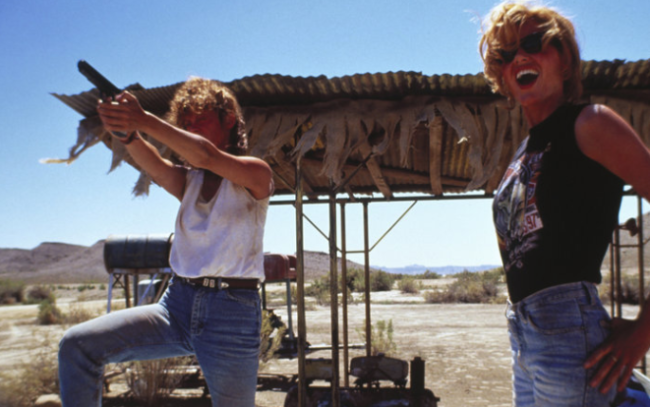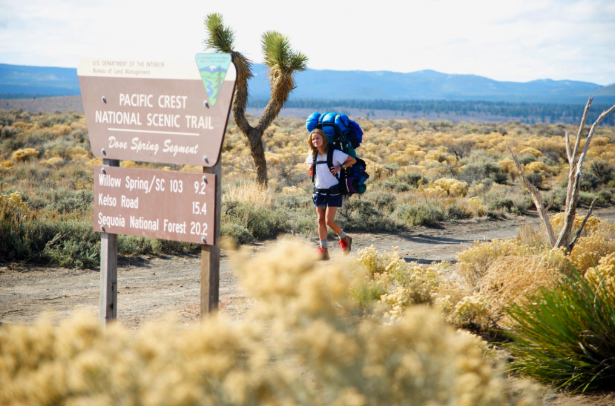WGF Summer of Screenplays: Our Six Fave Road Movies
I find it helpful to view a story as a jagged line between two points. Like a map, the line is the road a character takes to get from point A to point B. That road is often demarcated by landmarks, stops, highs, lows, setbacks, and unexpected changes of plans. The events – foreseen and unforeseen – along the road are moments of personal transition and transformation. The trip can be internal and/or external. It might even be an external manifestation of an internal conflict. Either way, one thing is certain. The characters won’t be the same after the events of the story when they reach their inevitable destination. The journey, the story and the road fundamentally change a person.
I've heard many writers posit that, in a sense, all movies are road movies. Some movies just happen to be more road movie-ish than others. With the spirit of travel and wanderlust in the Summer air, I offer you my favorite road movies and their screenplays, all of which you can read and study in the WGF Library.
IT HAPPENED ONE NIGHT (1934) Screenplay by Robert Riskin; Based on the Short Story Night Bus by Samuel Hopkins Adams

IT HAPPENED ONE NIGHT is the Ford Model T of road movies. One of the most influential films of the 20th Century, it lays the pavement and establishes the tropes and characteristics that so many other road movies follow. A recently fired newspaper reporter vows to reunite a spoiled heiress with her millionaire fiancé if she promises to give him exclusive access to her story. Through traveling down the road, staying in shoddy cabins and hitchhiking rides – including one in a Ford Model T – the pair of opposites unexpectedly falls for each other (which leads to trouble when they arrive at their destination).
I love the title of this movie. It illustrates how on a casual evening, somebody you dislike can do something that changes your opinion of them. On a casual evening, you can surprise yourself by feeling compelled to do something out of character yourself. As writers, one of the most essential things we can strive to capture is the moment that it happens one night, “it” being subtle, consequential character change that causes the story to shift course.
THE GRAPES OF WRATH (1940) Screenplay by Nunnally Johnson; Based on the novel by John Steinbeck

In many of his stories and novels, John Steinbeck helps to define the very idea of the American road narrative. In THE GRAPES OF WRATH, a family of “Okies” leaves their dustbowl-ravaged home, hitting Route 66 in a beat-up homemade Sedan-truck combo. Their objective? A better life, picking fruit in California. In the driver’s seat sits Tom Joad -- the second son in the Joad family -- who comes home after serving jail time for a homicide. Traveling west with his folks, Tom undergoes a radical personal transformation. He begins the story a convict, but after witnessing the humanity and inhumanity of his fellow Americans on the road, he becomes a crusader for social justice. Nunally Johnson's adapted screenplay illustrates how the American dream doesn’t always come true and that reaching your destination doesn’t always equate better life, but getting there can help a person realize their soul. It’s a great script to study for character arc.
PAPER MOON (1973) Screenplay by Alvin Sargent; Based on the novel by Joe David Brown

PAPER MOON feels like Charlie Chaplin’s THE KID (1921) set on the road. When a young girl’s mother is killed, a con man resolves to return her to her Aunt in St. Joseph, Missouri. Along the way, he finds the stoic, streetwise kid to be an asset to his cons and to his life. I’m including this script on my list as it’s a near perfect depiction of a father/daughter pair of opposites who quarrel with one-another, but ultimately create a familial bond on the road. Traveling in a Model A convertible, the pair finds that their destination doesn’t necessarily resolve their problems, thus they choose to keep moving along down the road. It’s a screenplay that recognizes the line doesn’t end at point B, but rather transforms into a new storyline that ventures on to other points.
THELMA & LOUISE (1991) Written by Callie Khouri

It’s a road movie that feels like a country music ballad. THELMA & LOUISE flips classic outlaw road movies like BUTCH CASSIDY AND THE SUNDANCE KID and EASY RIDER on their heads. The southern-set film tells the story of a waitress and a housewife who use the road to liberate themselves from their repressed lives. Like Tom Joad in THE GRAPES OF WRATH, at different junctures, their eyes are opened to new skills, capabilities and a fighting spirit they never knew existed dormant within themselves. In her script, Callie Khouri proves exceptionally adept at creating setbacks for her characters. Beginning with Louise shooting a man who assaults Thelma in a honky-tonk parking lot, the friends evade capture in a 1966 Ford Thunderbird and save each other one trial and low point after another. By the conclusion of the story, the outlaws make the ultimate escape and their trip never really ends.
THE STRAIGHT STORY (1999) Written by John Roach & Mary Sweeney

I’m including THE STRAIGHT STORY on this list because who says that characters must travel exclusively by car in road movies? Here, the protagonist, Alvin Straight (deemed too sick and infirm to drive) inventively takes to the road in a John Deere tractor to see his faraway brother who’s recently suffered a stroke. Part of his motivation for taking the trip is just to prove that he can. Like the best road movie characters, Alvin meets all manner of people on the road. While discovering small-town America, he discovers himself. The sweet, salt of the earth nature of John Roach & Mary Sweeney’s screenplay makes THE STRAIGHT STORY one of director David Lynch’s most enjoyably “straightforward” films.
WILD (2014) Screenplay by Nick Hornby; Based upon the book by Cheryl Strayed

I can’t conclude this list without also mentioning 2014’s WILD. Adapted by Nick Hornby from Cheryl Strayed’s memoir of hiking the Pacific Crest Trail, the script and the film challenge the very molecular structure of road movies. Like Dante climbing the mountain of Purgatory in his DIVINE COMEDY, Cheryl takes to the PCT to face her vices and demons after the death of her mother. The resultant story uses Cheryl’s brain to jump in and out of memories, feelings and hallucinations. In a culture saturated with images and narratives about male wayfaring, Wild is a road movie about the spiritual evolvement of a female vagabond.
I truly could continue to ramble on and on about road movies. If you’re looking for a few more to round out this list, I recommend CENTRAL STATION (1998), A GOOFY MOVIE (1995), THE LAST DETAIL (1973) and REMEMBER THE NIGHT (1940).
Safe travels! - Lauren
